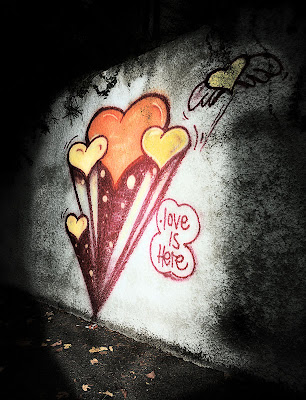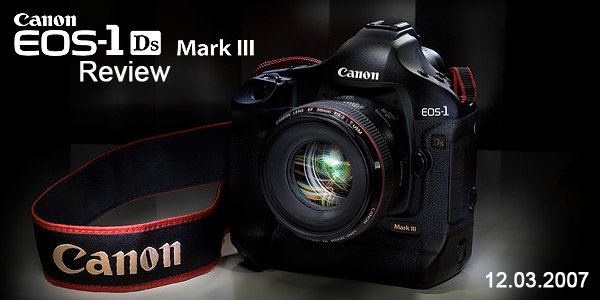
Allen ein Gutes Neues Jahr!
Happy New Year!
Bonne nouvelle anneé!
Ein Treffpunkt für Fotografie - A meeting place for photography
“I'd be really interested to see how the camera (Ricoh GRD II) does on a particular problem I'm looking at, which is how digital sensors deal with small details against bright sky.”Ich habe ihm gerne die Bilder zur Verfügung gestellt, zumal mich das Ergebnis seiner Prüfung selbst sehr interessiert.
"The file shows what I'd pretty much expected from a camera with that many pixels on a small sensor.Thanks Carl!
The thin dark details of the branches and the power lines register what I'm calling “false color.“ This may be a variation on color fringing (by the sensor, not due to chromatic aberration of the lens).
Essentially, details this small present nothing but an edge, and end up being resolved not with the color of the original subject but an artificial blue color.
A related problem is with similar subjects seen against an overcast, white, sky.
In that case, a bright sky area (or window from indoors) would be acceptable-looking even fully clipped, but the effect is ruined because some object (tree branch, window frame, top of a building) shows a blue or purple fringe at the transition-to-highlight edge.
While there's quite a strong tendency to false blue color in details seen against a deep blue sky, the transition-to-highlight behavior is really excellent.
In the couple of shots with some bare white sky, the details fading into that bright sky are very convincing, very “optical looking“ rather than digital/artificial looking.
The overall results are quite impressive.
I really have to remind myself that I'm looking at shots from a tiny pocket camera! Thanks for sharing these results with me.
BTW, I think these results bode well for using the camera to make b&w conversions.
The problem of false color against a blue sky pretty much goes away in that case, while problems with transition to highlights don't disappear with conversion."
 Wer die Testberichte der einschlägigen Websites liest, sucht und findet hoffentlich Fakten und Kriterien um z. B. eine bestimmte Kamera im Feld ihrer Mitbewerber einordnen zu können.
Wer die Testberichte der einschlägigen Websites liest, sucht und findet hoffentlich Fakten und Kriterien um z. B. eine bestimmte Kamera im Feld ihrer Mitbewerber einordnen zu können. Adobe Camera RAW, 400 ISO, 100% Ausschnitt
Adobe Camera RAW, 400 ISO, 100% Ausschnitt Silkypics, 400 ISO, 100% Ausschnitt
Silkypics, 400 ISO, 100% Ausschnitt"Go into any Gallery that has the work of the past masters and I think you'll be surprised at how many great photographs are not tack sharp."Und ich wiederhole einen Satz, den ich aus Anlass einer Lebeck-Ausstellung formuliert habe:
"… im digitalen Zeitalters des "pixel-peepings" zeigt uns manche sympathische Unzulänglichkeit der Analogen Fotografie, dass nicht Sensoren, Auflösung, Rauschen etc.pp. ein Foto machen, sondern der Fotograf und seine Fähigkeit, einen Augenblick zu gestalten."
 Ricoh GRD II, Bl. 2,4, 1/13 sec., Auto ISO, RAW konvertiert ACR
Ricoh GRD II, Bl. 2,4, 1/13 sec., Auto ISO, RAW konvertiert ACR Alle Jahre wieder stellen die Leute von Digital Outback ihre Top Tools des Jahres vor.
Alle Jahre wieder stellen die Leute von Digital Outback ihre Top Tools des Jahres vor.

"Wer allein mit der Kamera punkten will, reitet ein totes Pferd."Dieser Satz gehört als Pflicht-Warnhinweis über jede Website, jedes Forum, jeden Blog zum Thema "Fotografie" in Stein gemeisselt!
Ein Fotojournalist sollte die gesellschaftliche Wirklichkeit authentisch dokumentieren. Was wir alle täglich mit unseren eigenen Augen "über"sehen wird durch das Herausheben eines bestimmten Momentes zu einer allgemein sichtbaren Wirklichkeit.
Ich freue mich auf Gedanken und Kommentare.
Poverty is everywhere visible in the society. A photo journalist should document the social reality authentically. What we all "over"look with our own eyes will seen daily by lifting a certain moment out to generally visible reality. I look forward to thoughts and comments.

Folgende Buchstaben stehen nicht zur Verfügung:
HJ, KZ, NS, SA, SS
 Übergewichtige Fish and Chips-Esser in Großbritannien, krebsrote Urlauber im Liegestuhl, sich anschweigende Paare beim Essen, japanische Touristengruppen vor der Akropolis – mit peinlich genauem Blick für unscheinbare und nebensächliche Extremsituationen zeigt Martin Parr in seinen Fotografien die Welt, wie sie ist, und nicht, wie sie sein sollte.
Übergewichtige Fish and Chips-Esser in Großbritannien, krebsrote Urlauber im Liegestuhl, sich anschweigende Paare beim Essen, japanische Touristengruppen vor der Akropolis – mit peinlich genauem Blick für unscheinbare und nebensächliche Extremsituationen zeigt Martin Parr in seinen Fotografien die Welt, wie sie ist, und nicht, wie sie sein sollte. Martin Parr Foto und © Detlev Schilke
Martin Parr Foto und © Detlev Schilke Der Schwabe ist tapfer, tüchtig, treu und sparsam.
Der Schwabe ist tapfer, tüchtig, treu und sparsam.

 fotografiert mit Canon EOS 20D, EF 3,5-4,5/28-105mm USM, Bl. 5.0, 1/60 sec., 400 ISO
fotografiert mit Canon EOS 20D, EF 3,5-4,5/28-105mm USM, Bl. 5.0, 1/60 sec., 400 ISO… my strong response is that the color version is richer, more visually rewarding.and Michael asks:
What would it look like if you brought the contrast up as much in the colour as in the B&W?

Endlich ist unsere Analyse der Canon Sub-Spiegel Reparatur und Firmware v1.1.3 für die EOS 1Ds Mark III fertig.Die Antwort gibt es hier.
Lösen die Hardwareänderung und neue Firmware das AI Servo Autofokus Probleme? Hat die EOS-1D Mark III jetzt die gleiche , oder gar bessere AF-Performance bei hellem Licht als ihre Vorgängerin, die EOS 1D Mark II N?
 Der Nikolaus war ja schon da!
Der Nikolaus war ja schon da! John Harrington hat Post bekommen: ein Paket mit einer Canon 1Ds Mark III und eines mit einem Nikon D3-Gehäuse.
John Harrington hat Post bekommen: ein Paket mit einer Canon 1Ds Mark III und eines mit einem Nikon D3-Gehäuse.Ehrlich gesagt, ich bin froh, dass ich mich nicht entscheiden muss. Ich habe eine Blondine und eine Brünette .. ähh ... eine Canon und Nikon.
"a factual reproduction of something that is in your own mind."
 Wer heute eine Kamera verkaufen will weiß: nichts ist schlimmer als ein enttäuschter Kunde.
Wer heute eine Kamera verkaufen will weiß: nichts ist schlimmer als ein enttäuschter Kunde.Das Canon 18 - 55mm ƒ/3.5-5.6 IS EF-S Objektiv ist ein bemerkenswertes Upgrade auf die Standard Kit-Linse.
Selbst wenn Sie nicht an der Bild Stabilisierung interessiert wären, das Hinzufügung eines asphärischen Linsenelements (und andere Feinabstimmung der Linse) bringt verbesserte Schärfe und Widerstand gegen chromatische Aberration.
Das Objektiv ist es definitiv wert, einen Upgrade vorzunehmen.

 Die beste Kamera …
Die beste Kamera …

